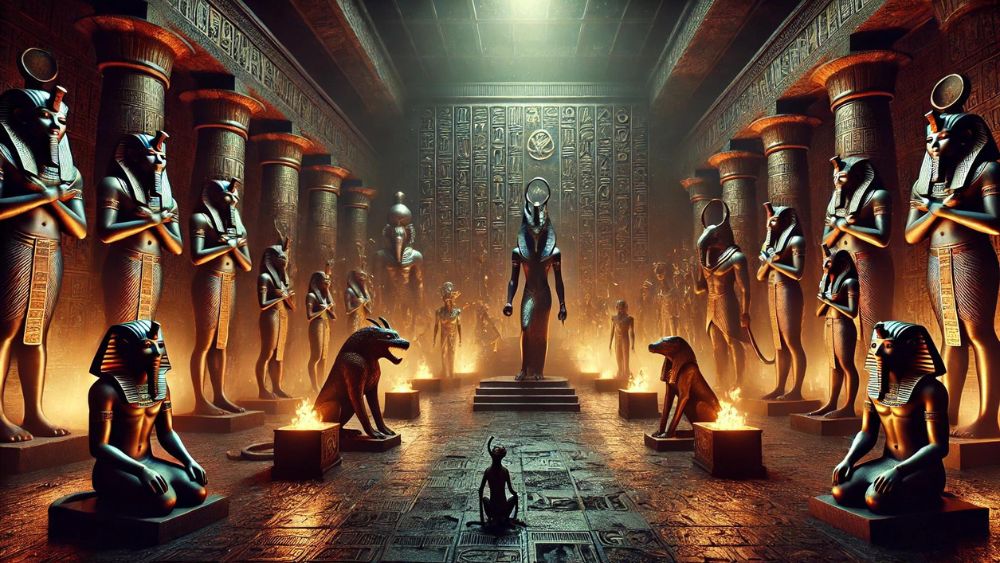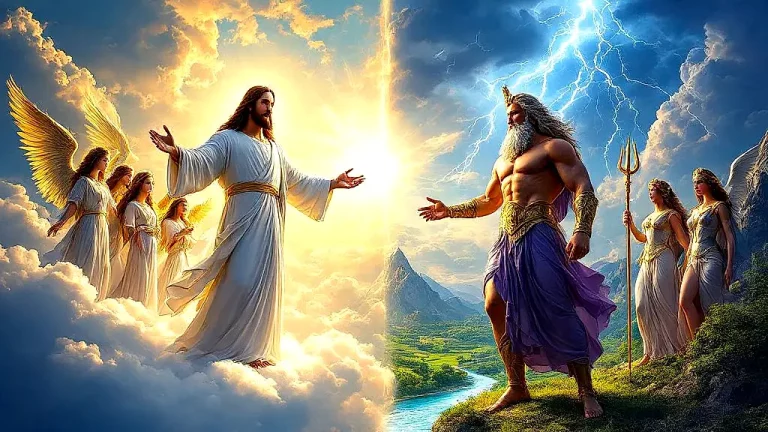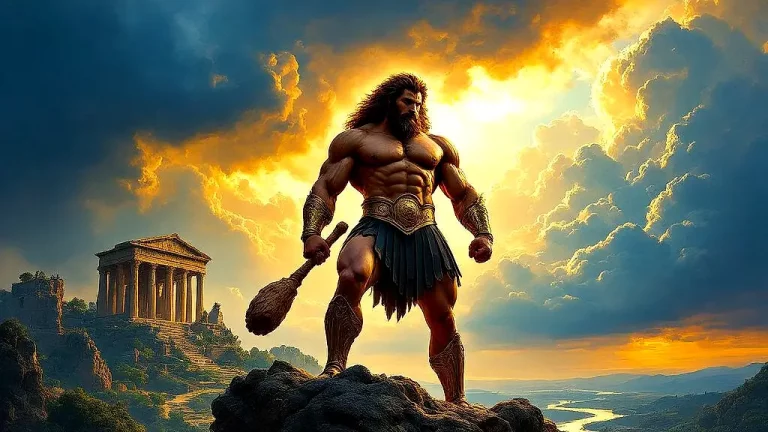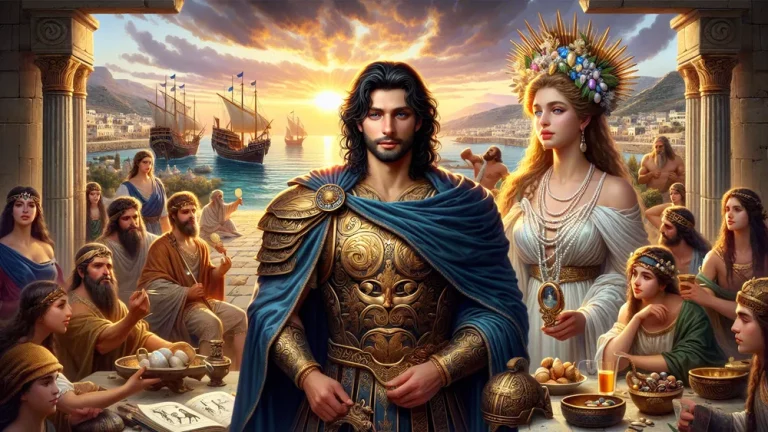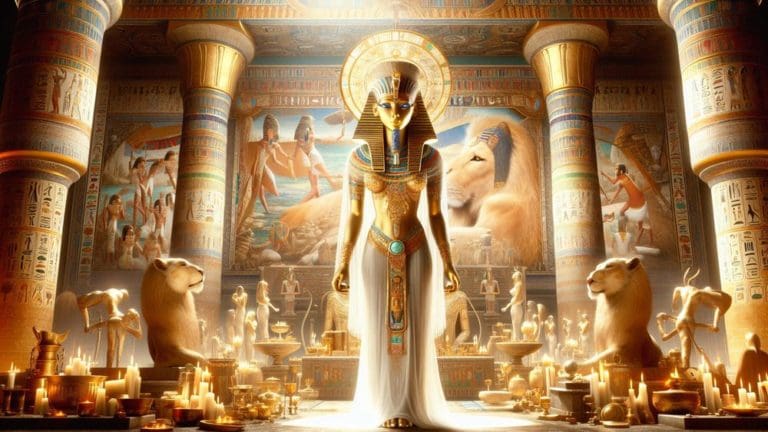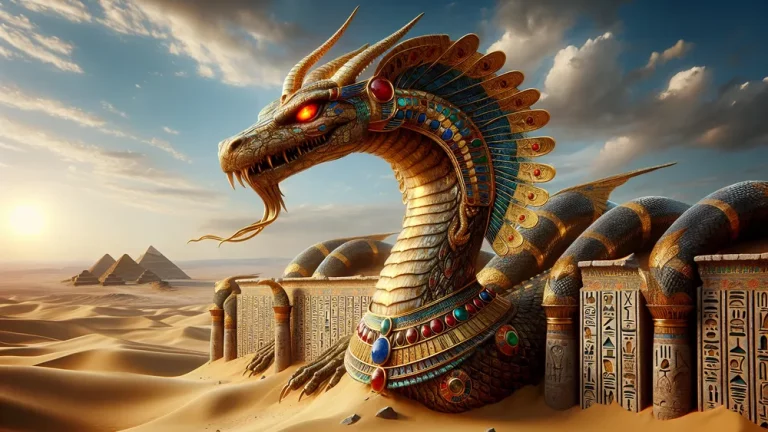11 Scariest Egyptian Gods To Haunt Your Dreams
Think of a place where gods and goddesses have a lot of power, they can protect or scare people. For instance, in old Egyptian stories, this world is clearly shown with a group of gods. Each one has their own special things and tales about them.
Key Points:
- Ammit, the Eater of the Dead, eats hearts of bad people to maintain cosmic order.
- Apophis symbolizes chaos and eternal threat, fighting the sun god Ra every night.
- Sekhmet balances healing and destruction, representing the thin line between the two.
- Set, the god of chaos, represents the clash between order and disruption in Egyptian tales.
- Anubis guards and guides the dead through mummification and the afterlife.
- Sobek, the crocodile god, protects and threatens, symbolizing the Nile’s power.
- Nephthys comforts and protects the dead, playing a crucial role in funerary rites.
This blog post takes you through the scary part of Egyptian stories, showing you eleven of the scariest Egyptian gods that could make you have bad dreams. From Ammit, who eats hearts, to Hathor/Sekhmet, the goddess of love and breaking things, you will learn the scary things these gods did long ago.
Whether you are new or a fan of mythology, this look will show details about how the gods look, what they did, and why they matter. This is done to keep it easy and interesting. So, get ready as we look at the spooky side of these old Egyptian gods.
Scariest Egyptian Gods: Overview and Key Facts
| God/Goddess | What They Handle | How They Look | What’s Important About Them |
|---|---|---|---|
| Ammit | Life After Death, Decision Making | Part lion, hippo, crocodile | Eats hearts of bad people, stops them from going to the next life |
| Apophis | Disorder, Breaking Things | Big snake | Stands for disorder, fights Ra all nights |
| Sekhmet | Battles, Fixing | Lion-headed woman | Brings both sickness and health, strong guard of the pharaoh |
| Set | Disorder, Storms, Violence | Man with animal head | God of disorder, fights Osiris and Horus |
| Anubis | Preparation for Afterlife, Next Life | Jackal-headed man | Watches over mummification, guides souls to the next life |
| Sobek | River, Crocodiles | Crocodile or man with crocodile head | Protects and threatens, linked to Nile’s growth and dangers |
| Babi | Aggression, Manliness | Baboon | Likes blood, linked to the underworld and manliness |
| Nephthys | Sadness, Shielding | Woman with house and basket on head | Guards the dead, linked to sadness |
| Khonsu | Moon, Time | Young man with sidelock of youth | Violent parts, linked to the moon and time |
| Osiris | Life After Death, Coming Back | Green-skinned man in mummy wrappings | Judges the dead, god of coming back and the next life |
| Hathor/Sekhmet | Affection, Breaking Things | Cow-headed woman or lion-headed woman | Two sides of affection and breaking things, guards and destroys |
11 Scariest Egyptian Gods That Will Haunt Your Dreams
Now, let’s look into the scary parts of these old gods and find out why people have had them in their minds through all history.
1. Ammit: The Heart-Eating Monster
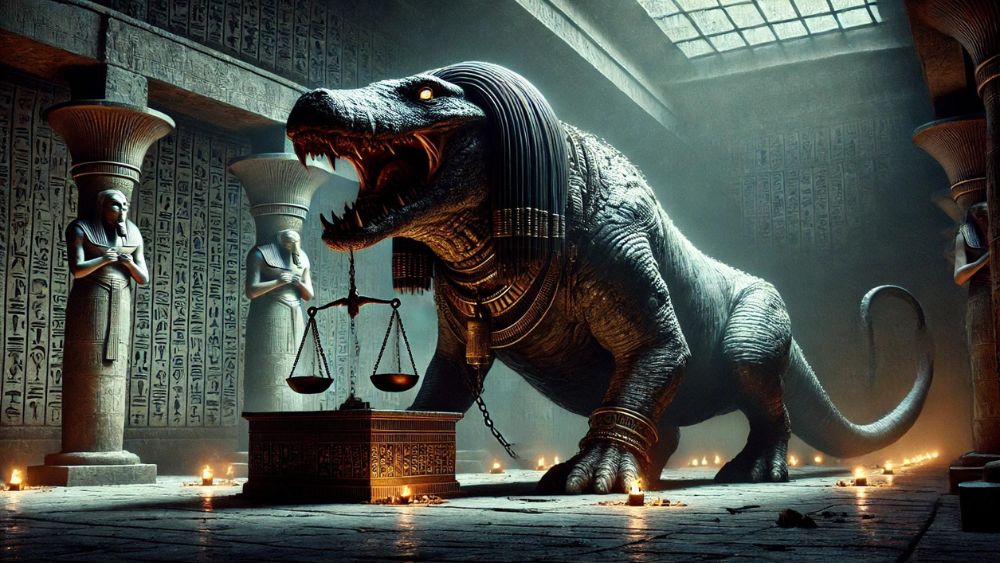
Ammit, sometimes called the “Eater of the Dead,” has an important role in old Egyptian life after death. Think of a situation where your soul’s future is decided; Ammit is the one who does the punishment here.
She is shown as a scary animal with the head of a crocodile, front legs like a lion’s, and the back of a hippo – three very dangerous animals known to people back then. Her main job is to eat hearts of those not deserving during the Weighing of the Heart ceremony, which is overseen by the god Anubis.
When a heart, weighed against Ma’at’s feather (truth and justice), is found heavier due to bad actions, Ammit eats it, sending the soul to eternal restlessness. This scary role shows her importance in keeping cosmic order, making sure only the good ones can go to the next life.
Ammit plays a crucial role in Egyptian afterlife by punishing souls deemed unworthy during the Weighin of the Heart ceremony.
2. Apophis: The Giant Snake of Chaos
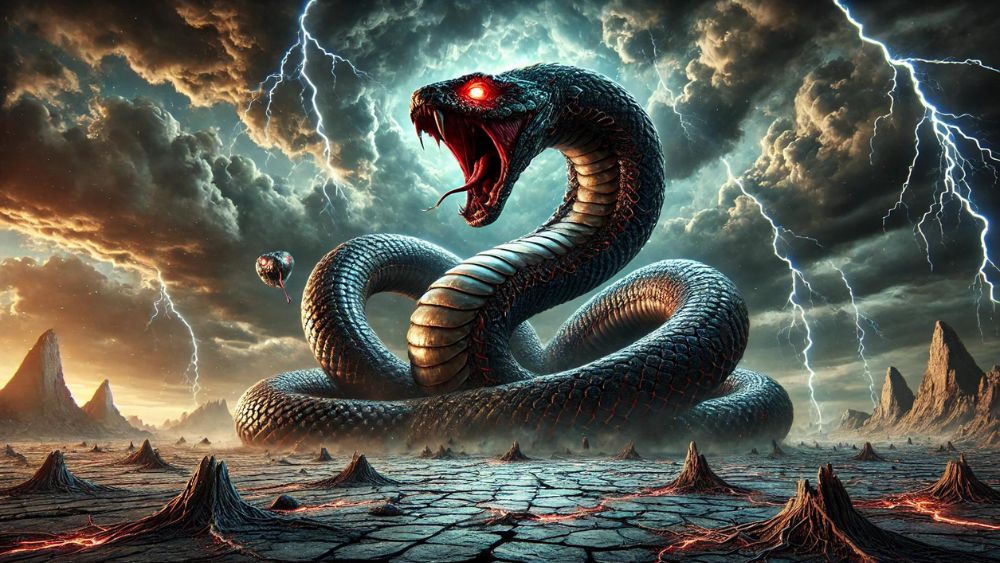
Apophis, known also as Apep, is the best symbol of chaos and breaking things in Egyptian stories, often shown as a huge snake. Think of a fight that never ends between good and bad; Apophis is the main bad guy in this huge fight. So, every night, he tries to eat the sun god Ra as Ra goes through the world below, showing the forever fight between order and breaking things.
This nightly fight is super important in Egyptian ideas, as it shows the constant threat of disorder that needs to be beaten to keep things balanced in the world. Apophis’s being there shows the Egyptians’ thought about the repeating nature of time and the unending fight to keep Ma’at, which is the idea of truth and order.
His scary nature and endless chase of chaos make him one of the top scary figures in Egyptian stories.
3. Sekhmet: The Fierce Goddess of Healing and War
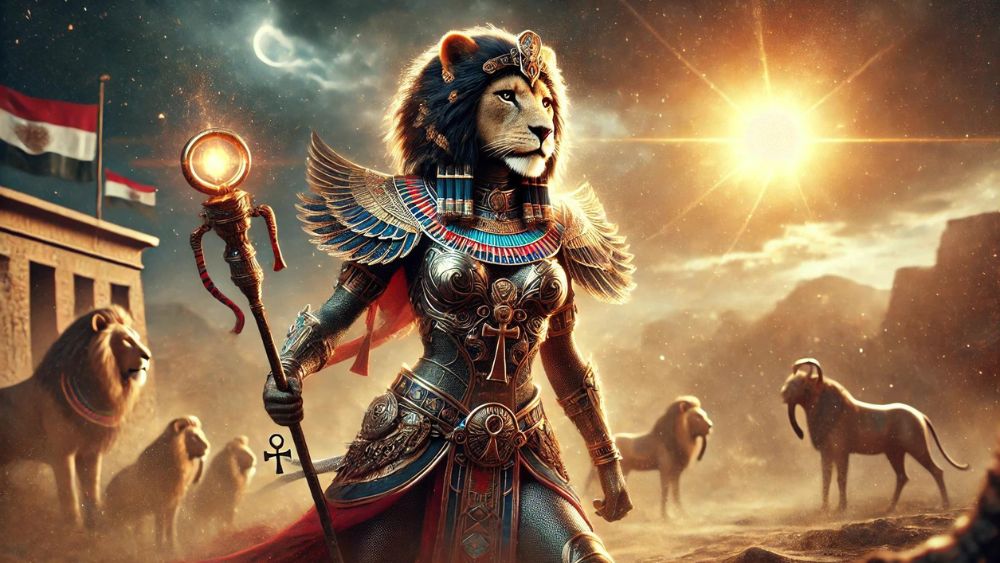
Sekhmet is one of the strong gods in old Egyptian stories, showing both wild and caring sides. Imagine a fighter who also heals; Sekhmet’s wild and caring sides. From the fiery look of the sun god Ra, she came to punish people for disobedience, causing a bad plague.
But, her angry side is balanced by her role of a healer, able to fix the very sickness she creates. Often shown as a woman with a lion’s head, Sekhmet’s scary parts include her never-ending hunger for blood and her role as a helper of the pharaohs in fights.
Her two sides show old Egyptians’ idea of the thin line between breaking things and fixing them, making her a very complex and amazing figure among their gods.
4. Set: The God of Chaos, Storms, and Violence
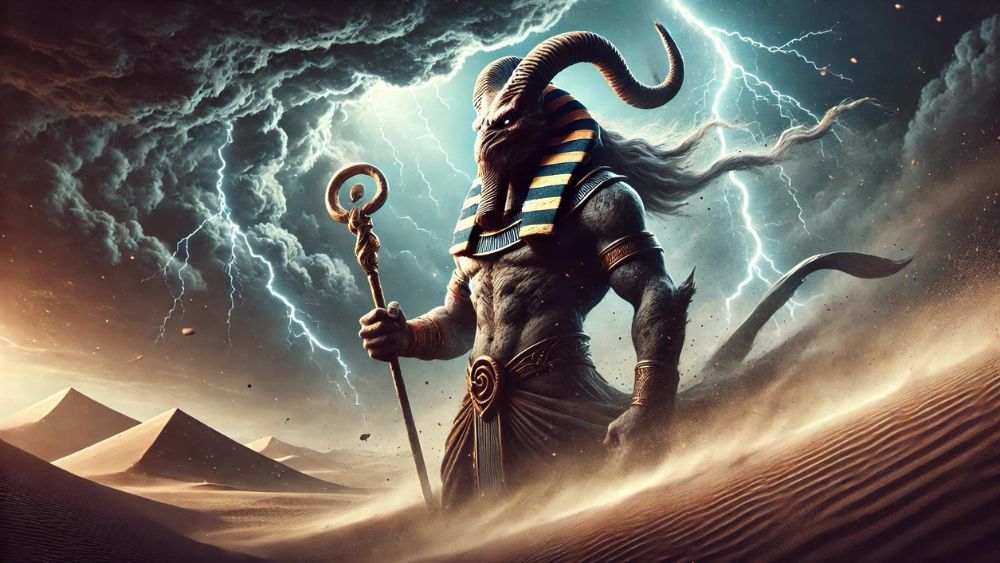
Set, the god of chaos, storms, and violence, is among the most complex gods in Egyptian tales, with a fearsome presence. Think of a storm that can both destroy and bring about change; Set shows this dual nature. Known for his wild fights with other gods, like his brother Osiris and nephew Horus, Set’s actions tend to mess up the cosmic order. His role having many parts: he is both a needed force of chaos challenging the usual and a guard of Ra during Ra’s night trip through the land of the dead. Fearsome traits of Set include his link with destructive storms and being shown with a strange animal head, showing his unpredictable ways. This table lists his key features:
| Attribute | Description |
|---|---|
| Conflicts | Fought with Osiris and Horus, showing the clash between order and chaos |
| Role | Shows chaos and violence, yet also guards Ra in the underworld |
| Fearsome Traits | Linked to storms, violence, and shown with a mysterious animal head |
Set’s two sides as both a disruptor and a guard show the old Egyptians’ complex understanding of the forces that shape their world.
5. Anubis: The Protector of the Dead
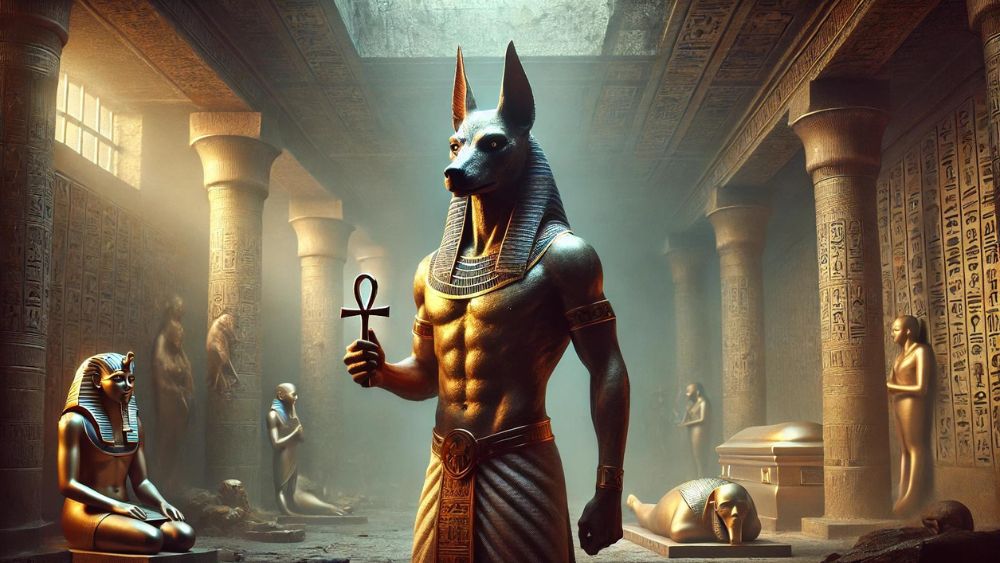
Anubis is the god of mummification and the afterlife, a significant part of making sure souls pass safely. Imagine a guardian who carefully prepares and leads the dead on their trip; Anubis does this with great care. Often shown as a man with a jackal’s head, he watches over the embalming and rituals linked with mummification.
His duties include weighing hearts of the dead against Ma’at’s feather to find out if they are good enough for the afterlife. Anubis’s role is really important in funerary practices; he guards graves and guides souls through the dangerous path to the afterlife.
His presence made ancient Egyptians feel safe, knowing their loved ones got respect and care in death, showing his big role in their beliefs.
Anubis plays a crucial role in ancient Egyptian beliefs, overseeing the safe passage of souls to the afterlife through careful rituals and guardianship.
6. Sobek: The Crocodile God of the Nile
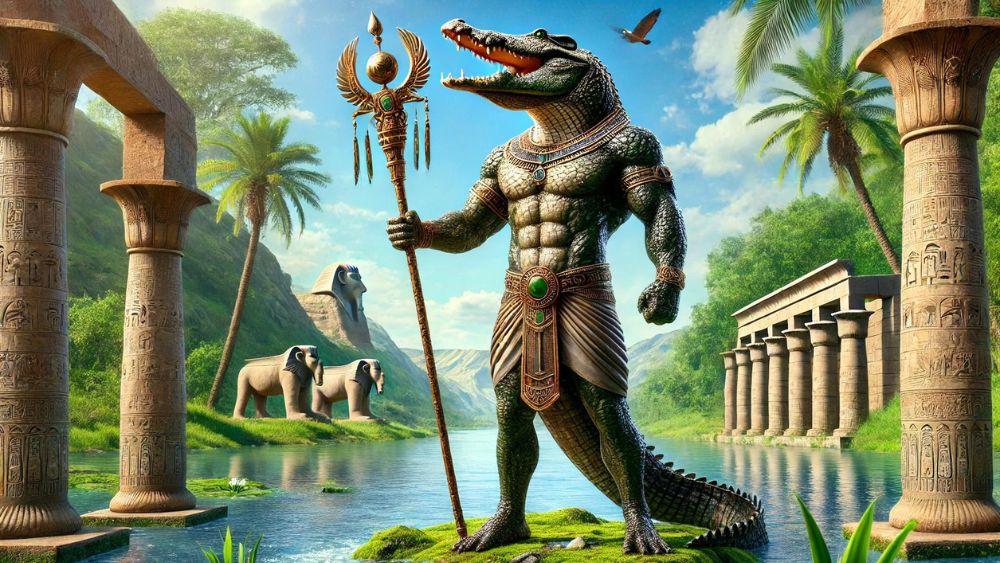
Sobek, the crocodile god of the Nile, shows the two sides of the river’s giving life and being dangerous. Think of a powerful guardian who can both protect and be a threat; Sobek has this frightening presence.
Coming from the old Egyptian idea of the Nile’s important part, Sobek is often shown with a crocodile’s head, showing the river’s dangerous and giving traits. His role includes protecting people from Nile’s dangers, like floods and crocodile attacks, yet being a potential threat too. Worshipped in areas like Faiyum, where there were many crocodiles, Sobek was respected through rituals and offerings to calm his anger and get his protection.
His complex nature shows how ancient Egyptians respected the Nile’s power and felt they needed to be careful while honoring it.
7. Babi: The Bloodthirsty Baboon God
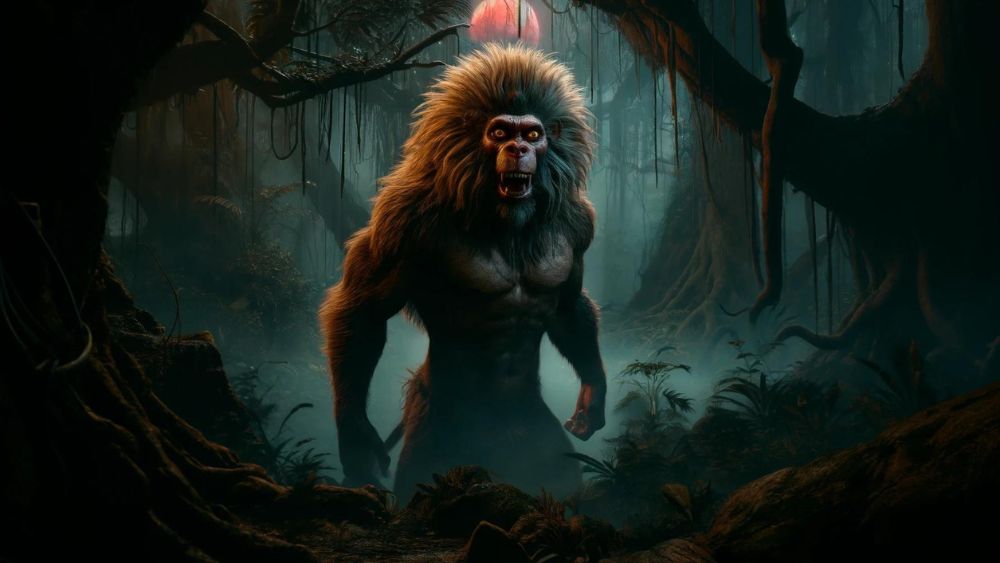
Babi, the baboon god who is hungry for blood, is a scary figure in Egyptian tales, known for his violent and fierce ways. Imagine a guardian who is both protective and dangerous; Babi shows this with his wild behavior. Often shown as a baboon, Babi’s traits include a never-ending hunger for blood and his link with the raw, untamed parts of nature.
In the afterlife, Babi has an important job as guardian of the gates, making sure only good enough souls can go through. His name becomes even more frightening by his link to the underworld, where he is thought to eat the souls of those not good enough.
This scary aspect of Babi shows how ancient Egyptians needed fierce protectors to keep balance between order and chaos in the afterlife.
8. Nephthys: The Lady of Mourning
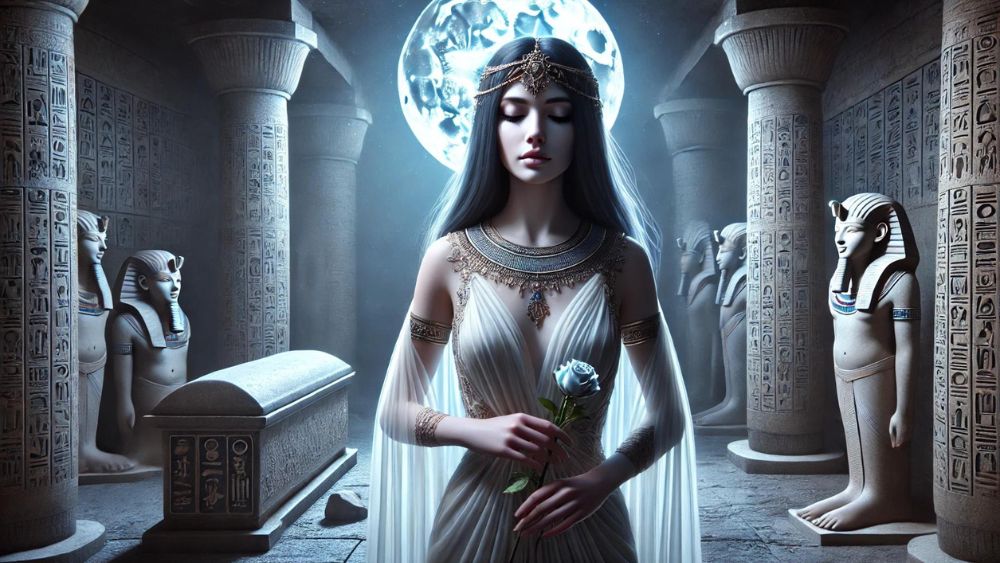
Nephthys, the goddess tied to mourning and protection, plays an essential part in Egyptian myths as a kind figure who gives comfort during times of grief. Think of a caring figure who stands by you in your darkest moments; Nephthys shows this with her comforting and protective nature.
Often shown as a woman with a symbol of her name on her head, this shows her godly status. Her link to Isis and Osiris, and being Set’s wife, forms a web of relationships that show her many-sided character. Her darker side is clear in her link with death and the afterlife, where she helps protect and guide the dead.
Nephthys being part of funerary rites highlights her importance in giving a sense of safety and peace to the souls of the dead, making sure they are not alone in their trip to the afterlife.
9. Khonsu: The Violent Moon God
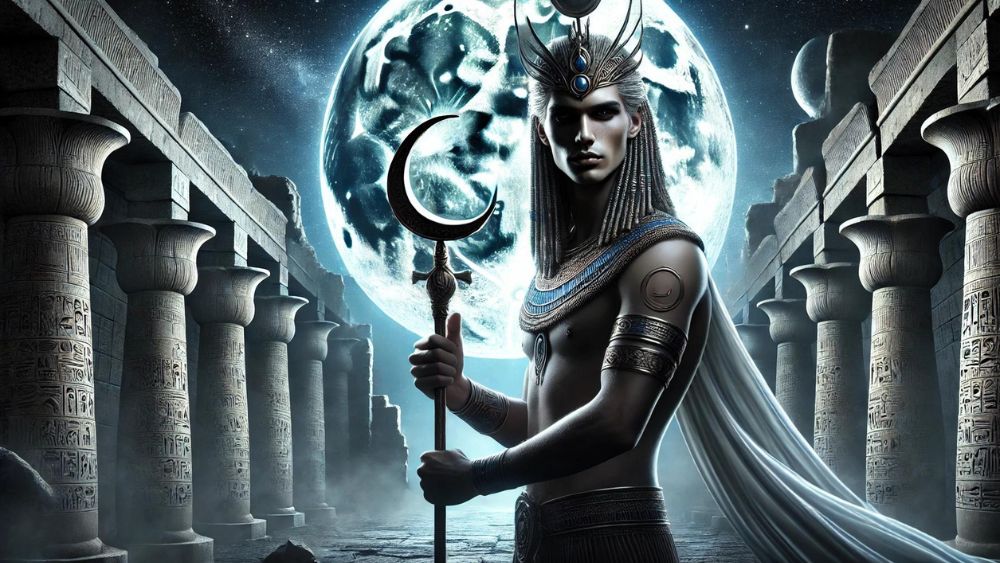
Khonsu, the moon god with a violent side, is an interesting figure in Egyptian stories for his two-sided nature. Imagine a heavenly being who can both light up the night and cause trouble; Khonsu shows this two-sidedness with his complicated nature.
Coming from old Egyptian beliefs, Khonsu is often shown as a youth with a sidelock and a lunar disk on his head, showing his link to the moon. In myths, Khonsu has a critical role as a guard against bad spirits and a healer, but he also has a darker, more violent aspect.
His scary traits are clear in his link with bloodshed and the story where he gambles away part of the moon’s light to Thoth. This two-sidedness highlights how the old Egyptians saw the moon’s influence as both caring and maybe destructive, making Khonsu complicated and something to think about in their group of gods.
10. Osiris: The Afterlife Judge
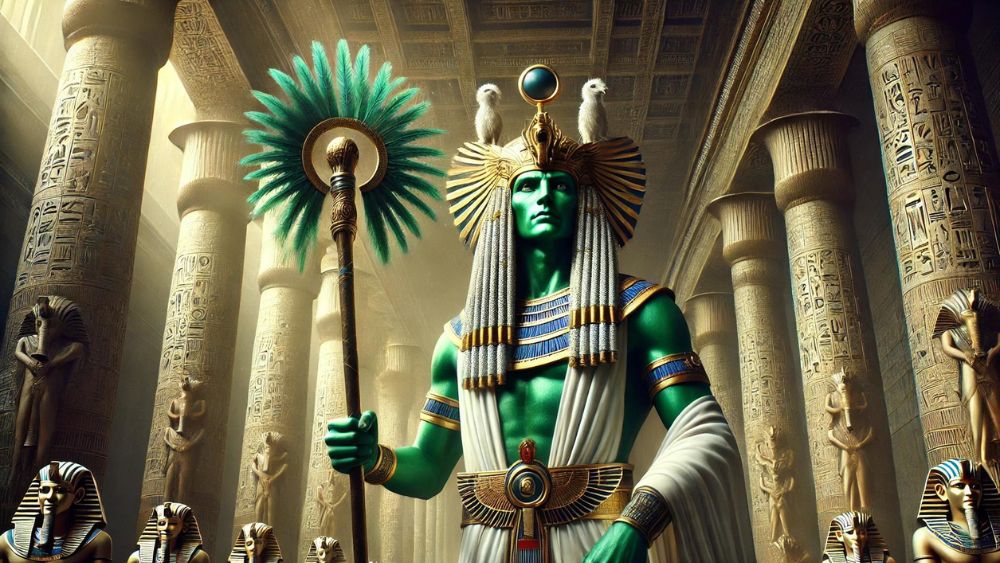
Osiris, the god of the afterlife and the decider of the dead, has a vital place in Egyptian tales as the judge of souls. Imagine a wise and fair judge who decides people’s fate based on their actions; Osiris does this with his fair and kind nature.
From old Egyptian beliefs, Osiris is often shown as a mummified king holding a crook and flail, showing his power over the afterlife. Often, his role in the afterlife involves leading the Weighing of the Heart event, where the hearts of the dead are weighed against the feather of Ma’at to see their goodness.
The myth where Osiris is killed by his brother Set and later brought back to life by his wife Isis shows his meaning as a symbol of rebirth and eternal life.
This story not only highlights ideas of death and coming back to life but also shows again Osiris’s need in Egyptian religion as a god who gives hope and justice to the souls of the dead.
11. Hathor/Sekhmet: The Goddess of Love and Destruction
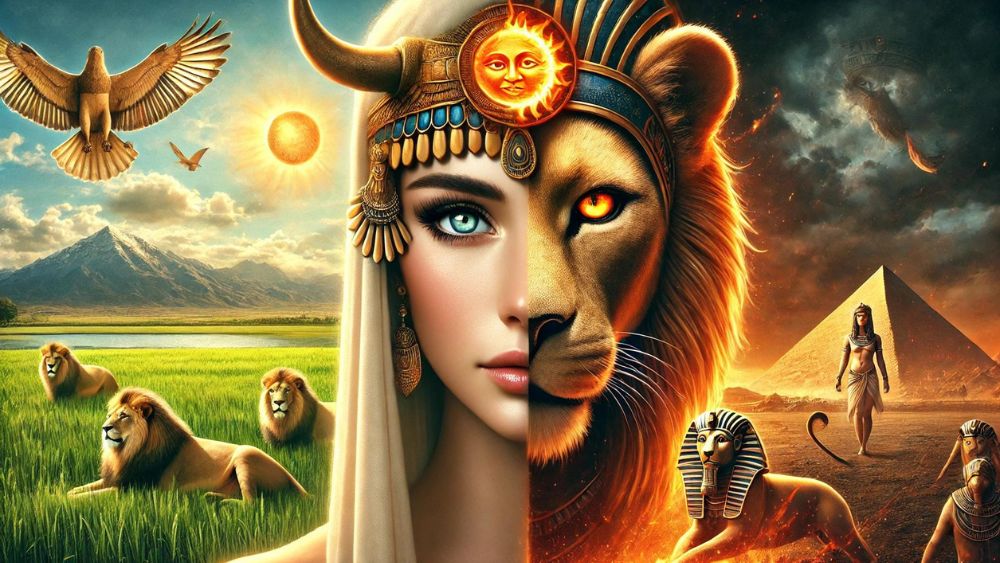
Hathor/Sekhmet, a dual-natured goddess, shows the opposite forces of love and destruction in Egyptian stories. Think of a person who can be both a loving helper and a strong fighter; Hathor/Sekhmet shows this with her complex character. Hathor, often shown as a cow or a woman with cow horns, is the goddess of love, beauty, and motherhood, giving joy and care to her people.
Sharp contrast, Sekhmet, shown as a lioness, is the goddess of war and destruction, causing her anger to fall upon those who disobey the gods. This mix is important to her role in tales, where she can bring making better things and destruction. From the worship of Hathor/Sekhmet, people did actions to calm her destructive side while calling on her caring side.
This showed the old Egyptians’ understanding of the fragile mix between making and destroying. This two-sided nature made Hathor/Sekhmet a powerful and respected being, showing the full range of godly influence in their lives.
FAQs
1. Who Was the Scariest Egyptian God?
The scariest Egyptian god is often considered to be Apophis due to his embodiment of chaos and eternal threat to the cosmic order.
2. How Did Ancient Egyptians Protect Themselves From Evil Gods?
Ancient Egyptians protected themselves from evil gods through rituals, amulets, and prayers designed to invoke the protection of benevolent deities.
3. Can You Still Visit Temples for These Scary Gods Today?
You can still visit temples for these scary gods today, as many ancient Egyptian temples dedicated to them have been preserved and are accessible to the public.
4. Why Did Egyptian Gods Have Animal Characteristics?
Egyptian gods had animal characteristics to symbolize their divine attributes and powers.

